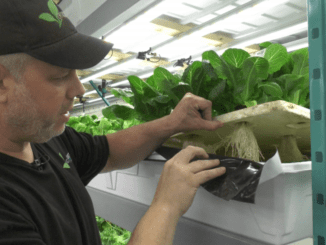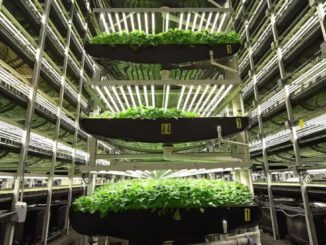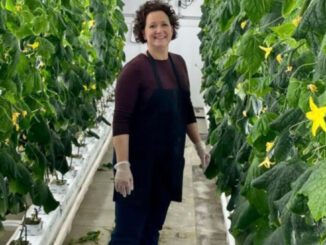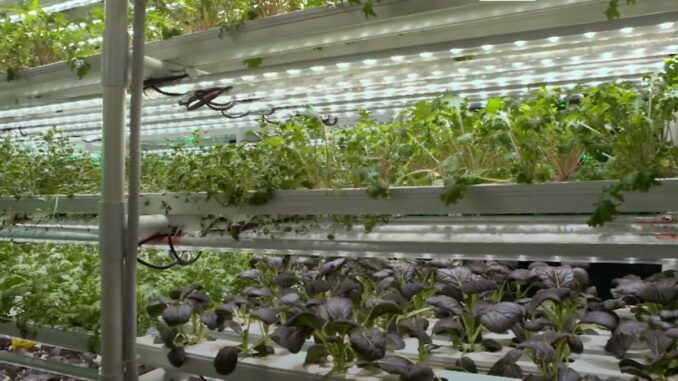
Meet the futuristic farmer growing vegetables vertically in Georgia
Global Indoor Farming Georgia | Gregory Ward & Pearly Jacob |
When people think of the future, they often envision a world of advanced technology and dwindling natural resources. Many imagine humans travelling to Mars and even dream of growing plants on the rocky planet.
These ideas seem a long way off, but to Tusya Garibashvili, the future is already here. In 2018, the agricultural entrepreneur co-founded ‘Space Farms’, an innovative project based in Tbilisi, Georgia.
“Space Farms is an indoor vertical farm. Our facility grows vegetables across approximately 150 square metres. However, the growing area is only 60 square metres, as we cultivate vertically,” Tusya tells Scenes.
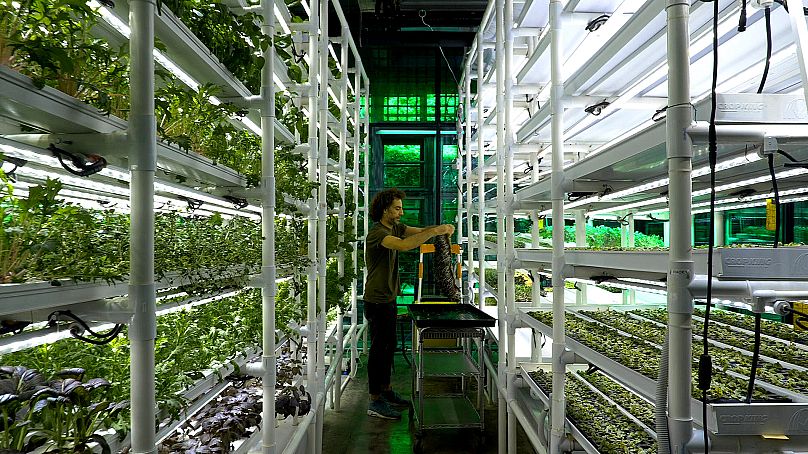
Indoor vertical farms can grow 365 days per year, regardless of the weather conditionsPearly Jacob
Georgia is a small country which primarily applies conventional farming techniques. According to the Food and Agriculture Organization of the United Nations, Georgia has only 788,000 hectares of land available for agricultural production. Nevertheless, around 659,000 people are engaged in the agriculture of Georgia, most of whom work on their small private farms.
Growing more with less
“Vertical farming can help us grow more vegetables with less space, less water, and zero pesticides,” says Tusya. “We save water by recycling it. After filtration, the water is reincorporated back into the system. So, we use 80% less water than traditional farms,” she adds.
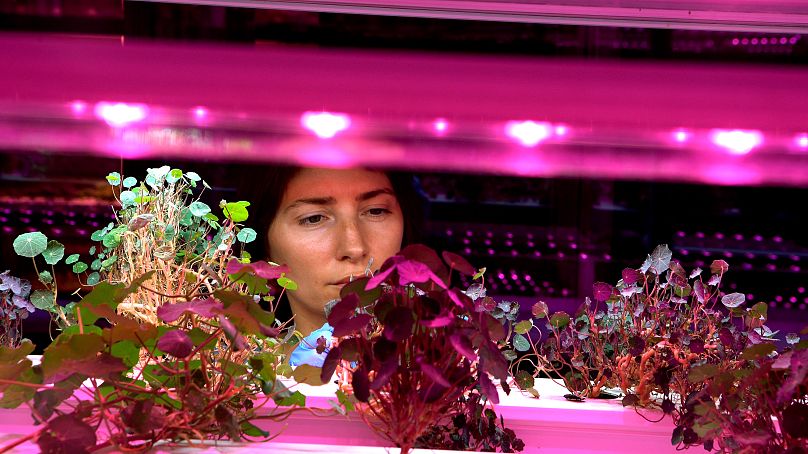
Tusya inspects the vegetables growing in the indoor facility in Tbilisi, GeorgiaPearly Jacob
Space farms are housed on the premises of a restaurant called Café Stamba. The farm provides the restaurant with fresh year-round vegetables grown meters away in large greenhouses.
“We cultivate 15 types of vegetables. Our crops change based on the menu of Café Stamba. So when the chef changes the menu and wants different vegetables, we grow veggies accordingly,” Tusya explains. “In the past, we have grown buttercrunch lettuce, Wasabi lettuce, pink Mizuna leaves, mustard greens, some types of microgreens, and edible flowers,” she adds.
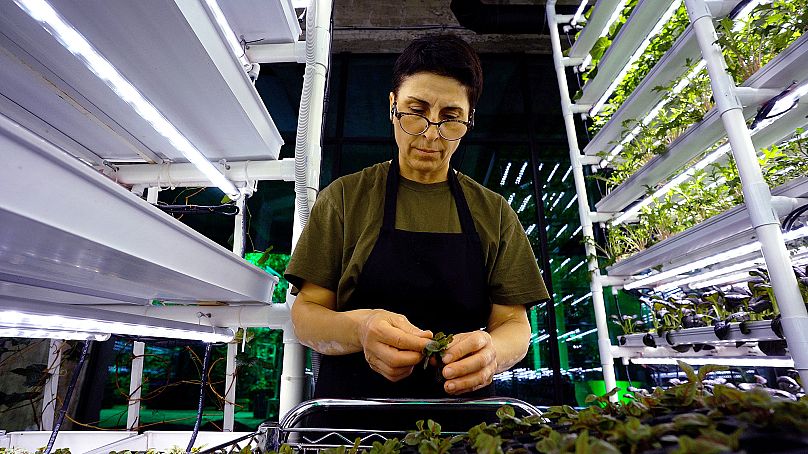
Vertical farming allows our farmers to grow more food in less spacePearly Jacob
A process of trial and error
Tusya and her colleagues built the farm from scratch. The start-up process was one of trial and error, as mistakes were made along the way. All the equipment had to be sourced internationally and installed by hand. “In the first year, I experimented a lot and succeeded in creating a healthy organism. I created a structure that works like a clock’s mechanism,” says Tusya. “Our veggies are grown in a very clean environment,” she adds.
Vertical farming uses advanced technology to control major factors like light, humidity, and temperature that contribute to the quality of their plants. For example, mechanisation helps measure acidity, alkali in water, the number of macro elements, and the pressure of steam on a leaf.
‘Every season all year round’
“We give our plants all the nutrients to grow in every season all year around. We always try to import innovations and provide our customers with new, healthy vegetables full of micro and macro elements,” Tusya says.
Space Farms is the first vertical farm in the country and has the ambition of growing plants in space. Georgia grows more than 500 varieties of grapevines, and Space Farms’ Ninth Millenium Project aims to cultivate these plants on Mars.
“We experimented. We took Georgia’s three most popular varieties and tried growing them in Space Farms. We wanted to see if they would grow in enclosed farming spaces, where there is no natural soil or sunlight,” Tusya says.
Marika, a senior researcher at the Georgian Space Research Agency, says that grapevines are the best plants to grow in the Mars-like environment. This is because they contain a variety of pigments that can withstand higher levels of ultraviolet radiation present in space. In addition, they have a reasonable rate of photosynthesis and are very effective at absorbing carbon dioxide and producing oxygen.
Vertical farms in space
“Maybe, one day, people can enjoy Georgian grapes on the International Space Station or the moon,” Marika tells Scenes. “Space Farms can show us ways to survive climate change on Earth. But let’s not forget that one day, we may have to go and live in space, especially on the moon and Mars. So, I can foresee having vertical farming on those planetary bodies,” she adds.
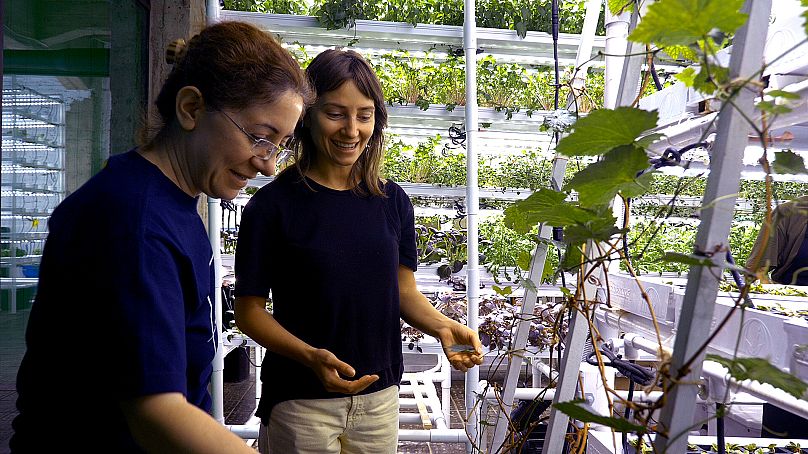
Marika and Tusya inspect the vegetables growing in the indoor facility in Tbilisi, GeorgiaPearly Jacob
Tusya and her team are leading the way in the research and development of vertical farms in Georgia. Their automated system can consistently produce high-quality crops without harmful pesticides all year round.
Space Farms is advancing human ambitions to live on distant planets and could be a valuable tool in the fight against climate change. For Space Farms, the sky is not the limit, merely the beginning.
Original Article: https://www.euronews.com/culture/2023/01/23/meet-the-futuristic-farmer-growing-vegetables-vertically-in-georgia

